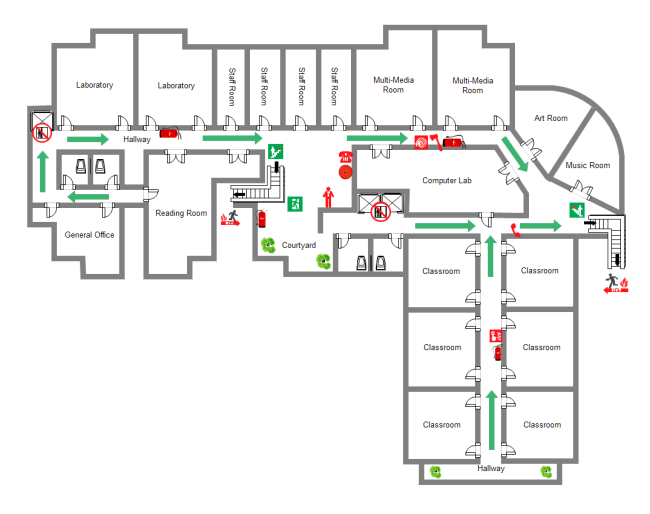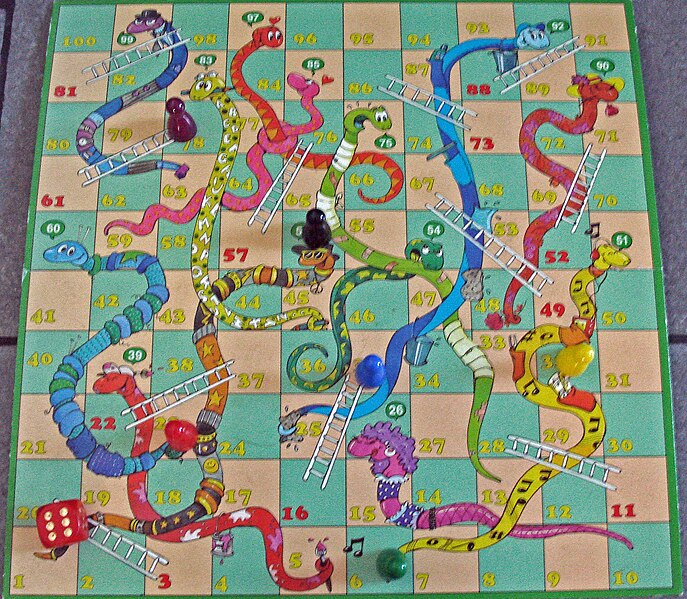There are many superb teachers of languages out there and if you are teaching your lessons perfectly in the target language then this post really is not for you. I wrote about this first in Developing Target Language Teaching however it has been an ongoing journey of improvement since. In 10 years, I’ve had to teach 3 different languages and am at varying levels with each. In a previous school, this meant all three in the same day on most days and hourly switching. If you are less confident with a language then this post is for you. If you are following NCELP schemes of work or similar then this is for you. If your department is more EPI influenced then a substantial amount of your target language input is probably coming from the LAM (listening as modelling) activities in the modelling, awareness-raising and receptive practice phases, however there may be something for you to take from it.
Routines
In my previous post, I wrote about how scripting was helpful. Lockdowns really helped with this. I began each lesson with the exact same language and it has stuck since. In my department, we moved from using command forms to “we’re going to”. This was partly due to the higher surrender value of “we’re going to” and it has worked a treat as students know a higher proportion of infinitives and are familiar with read/write/translate/speak etc. It also saves working out command forms in a variety of languages where they don’t come as naturally.
How do you start/finish a lesson?
It is well worth considering what are the first and last things that your classes hear from you? Is it target language? Is it comprehensible target language? Do you vary what you say depending on the level of the group?
Working it out Step by Step. This is how I set up a …
If you are teaching a language in which you are not particularly strong then it is a worthwhile use of a PPA to sit down and script out how you would set up a speaking / listening / reading / writing / translation task in that language and then check it by a more confident colleague. For example, let’s take a listening task. I’ll put the script in English below with “stage directions” in brackets.
- We are going to listen (check understanding of listen, use gestures)
- In your books, the information that you write is numbers / letters / positive / negative (check understanding, use gestures)
- We are going to listen two times (gesture, make sure fingers correct way round, check understanding)
- If it is dificult, possibly third time (gesture, check understanding).
- Number 1 (let it play as per recording)
- We are going to check
- Number 1 = A
- Who has number 1 correct? Hand up (gestures).
- We are going to continue with 2,3,4,5 etc.
- Afterwards we are going to correct it.
Get pupils to translate as you go.
My one caveat with setting up activities is that certain things are best done in English. I would argue these are (but not limited to):
- Some games with high value (no snakes no ladders) are sometimes best explained in English the first time as ultimately the game is forcing the students to produce the language and you might arive at that quicker.
- Grammar explanations. I find these are best done in English however practice activities after can normally be explained in TL.
- Negative discipline with consequences. Best done in English so complete clarity exists.
Icons
Doug Lemov’s Teach like a Champion refers to “Means of Participation.” Essentially, Lemov’s premise is that students should know exactly how to join in with each phase of a lesson. Ben Newmark (whose blogs are well worth a read) writes: “Clarity and predictability around Means of Participation results in better lessons; better behaviour, clearer teaching and children who learn more. It results in pupils who accept the rules around lesson contributions as non-personal organisational routines that create a fair and purposeful environment.“ There are two ways to ensure that the means of participation in our lessons are clear. Firstly, we can frontload instructions as we mentioned above (in bold). Secondly, we can add simple icons to our PowerPoints. It could be argued that this is taking away the need to listen. On the contrary, I’ve found the icons tend to help weaker learners and the stronger ones will focus on my instructions anyway. I would also add that the icon is often accompanied by the infinitive underneath.
Praise Praise Praise
As language teachers we’re pretty good at praise. We know every word for good, amazing, brilliant, fantastic, splendid and we encourage the students to use them in their writing. I have friends who still know tres bien from their French lessons back in the late 90s but I’m not sure the feedback was that helpful. I’ve tried altering some of the praise I give to pupils in the target language. This was partly with an aim to making it more specific (yet still comprehensible) and also helping them to hear a greater diet of words. In bold below are some phrases I will often use in target language.
Your pronunciation was perfect (this one really builds confidence “I said it right”)
98% correct. One small problem. (highlight problem) Can you repeat? (pupil repeats) Perfect
Incredible. Applause for … Very long, lots of details (with actions and occasional writing of cognates on board, detalles = details).
Great answer, one more time, more confidence please.
I don’t agree (pause) but your Spanish was perfect (often used when student has expressed a view that I disagree with such as mushrooms are tasty, Manchester United aren’t as good as …)
“Again, more passion” or “Again, stronger” Our school is currently using SHAPE to help pupils formulate better responses. This relates to the P for projection.
Displays
I have been through many displays in my time but my target language phrases one is probably the most used in class. I cannot remember where I got the phrases from but having them at the front of the room is quite useful for pointing. The blog link above will give you a flavour of the ones on the wall.
Coaching & hits/misses
It takes time in a language you are less familiar with to develop target language teaching. I suggest you have a friendly colleague who can pop in as a coach. They can praise you when you are getting it right and persevering, which helps to reinforce the routines. They can also log your hits/misses. Were there moments when you used English but simple French/German/Spanish was possible? There is not always time to reflect in a school day and this can be really helpful as long as the process is developmental and not judgmental.
What to do when it slips
Let’s be honest, it slips when we’re tired, stressed, sleep-deprived, not had tea/coffee or when we’re lacking confidence because it’s language number 3 and not your best one or you’re battling teaching 8×6 on a friday period 5. At this point, it is simply a case of get back on track as soon as you can. Don’t beat yourself up. Things that I have done in the past are:
- Stick TL phrases in weakest language to my desk.
- Stick TL phrases inside front cover of planner.
- Write a TL phrase at the top of my planner everyday for a week and try to get it into any lesson.
- Leave your door open and use TL whenever someone walks past.
- Tell yourself that someone is listening next door to see how much you’re using. Or actually have someone next door.
- Spanish minute. No-one is allowed to talk unless what they are saying is in Spanish (including the teacher), set a student to monitor it.
- Sometimes you just need to hit reset with a class. “I know we haven’t used as much … as I would like lately. I’ve done that too. We’re going to step it up a bit from Monday, be ready. I will be listening to hear you using …, there will be rewards if I hear lots of it from you. Likewise if you hear me using a bit too much English then you have to call me out on it.” This works better with more co-operative classes. The phrasing will need changing with less co-operative classes.
Language teaching can be exhausting. I have taught 5 new subjects to fill timetable gaps and languages seems to demand more energy than many of the others. It can be easy to slip into english, hopefully this post will help you Deutsch zu erhalten, maintenir votre français or mantener su espanol.

























 Again using the same principal as the trapdoor activity above. Students have to guess what their partner is thinking. They can only tell their partner how many they get right. Place a table on the board with 3-4 columns. The original game to the left uses four. Personally, I prefer three for MFL lessons. One student writes the target phrases in their book. The other tries to guess the phrases that they have written. This can be made quicker by giving students a number of lives. It also means both students are likely to get a go. Students seem to enjoy this one.
Again using the same principal as the trapdoor activity above. Students have to guess what their partner is thinking. They can only tell their partner how many they get right. Place a table on the board with 3-4 columns. The original game to the left uses four. Personally, I prefer three for MFL lessons. One student writes the target phrases in their book. The other tries to guess the phrases that they have written. This can be made quicker by giving students a number of lives. It also means both students are likely to get a go. Students seem to enjoy this one.



































.jpg)








